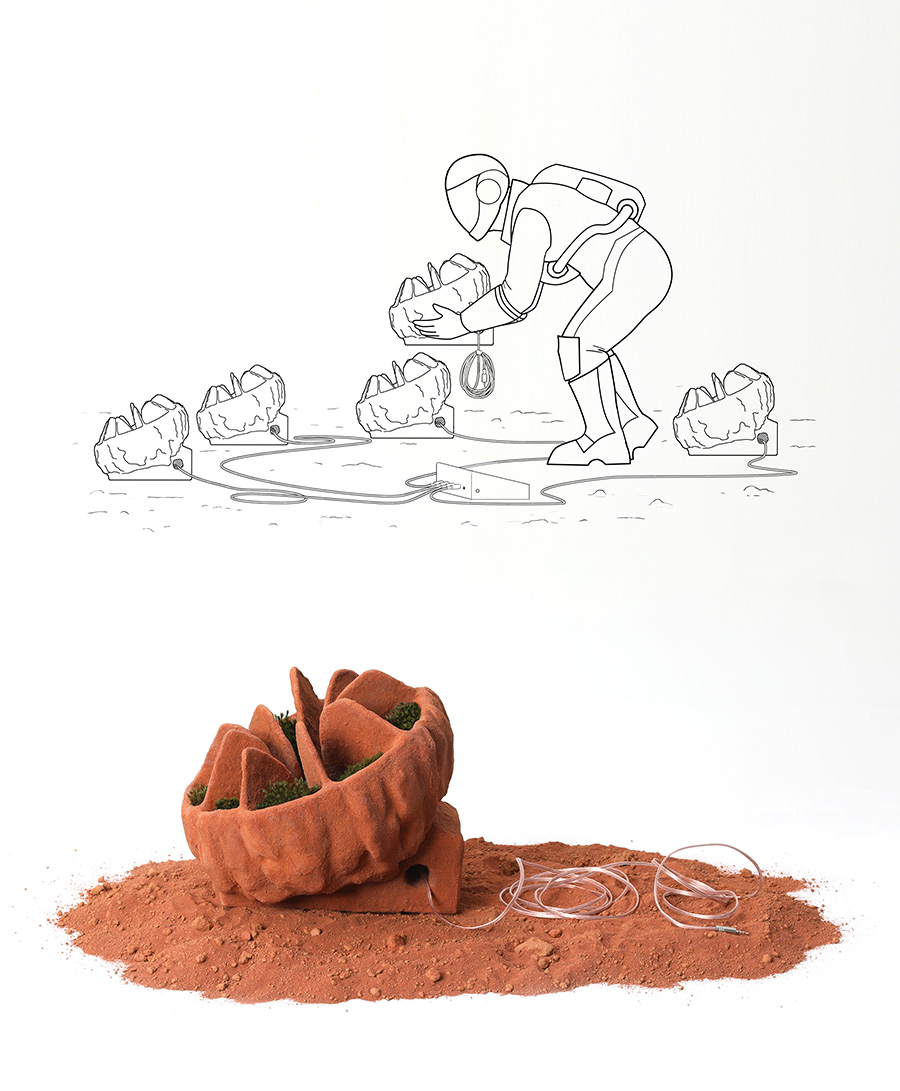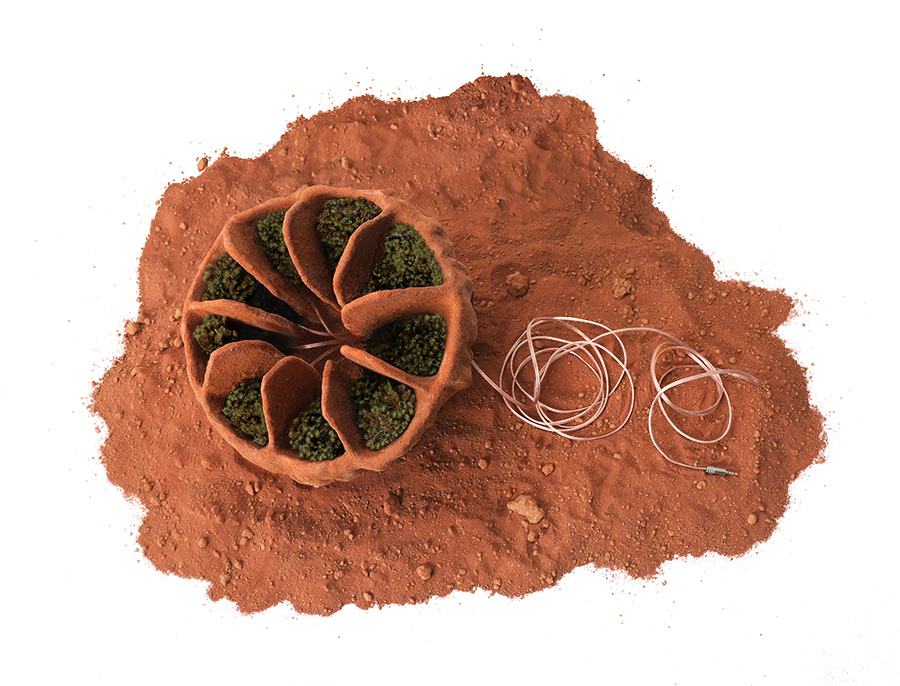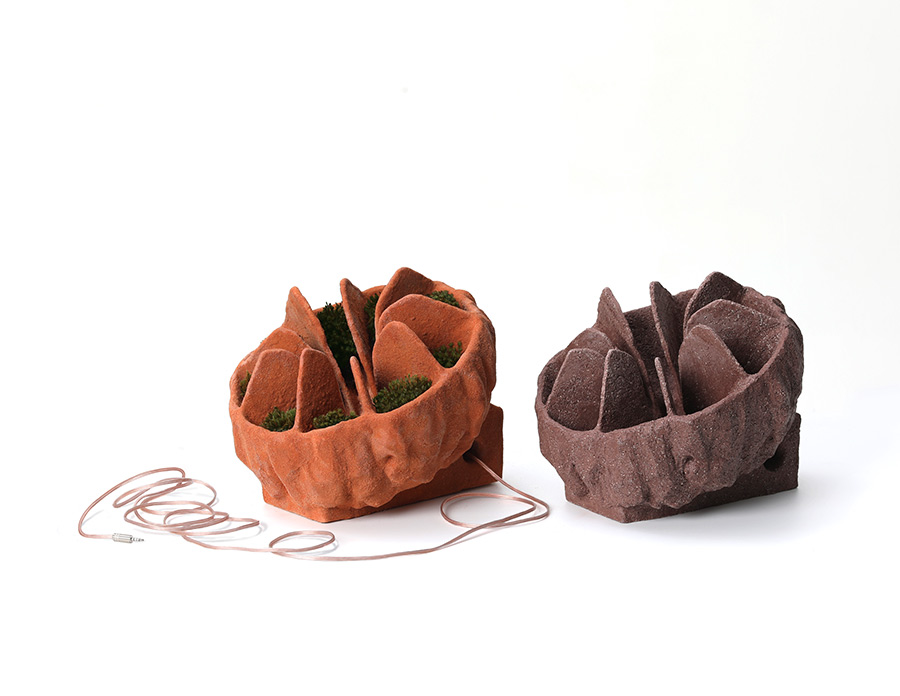Tina Eklund

Could moss be a pioneer on Mars, in the same way it once transformed Earth’s barren landscapes? As the first plant on land, moss initiated soil formation, paving the way for other plant life to emerge. Mosses carries an innate drive to inhabit uncharted ground and certain species are resilient to extreme conditions.
This degree project envisions a speculative future on Mars through a vessel 3D-printed in regolith, serving as a foundation for studying biological photovoltaics (BPV), solar power generated by photosynthesis. Within a biosphere, these vessels create an ever-expanding network, where BPV powers a sensory interface that monitors moss health.
Five vessels are 3D-printed in sand, simulating Martian regolith and connected to an electronic artefact that communicates BPV charging through blinking LEDs. Together, these artefacts envision how moss and humanity, bound in mutual dependence, could shape interplanetary habitats, while also inviting a reconsideration of our relationship with moss on Earth.

